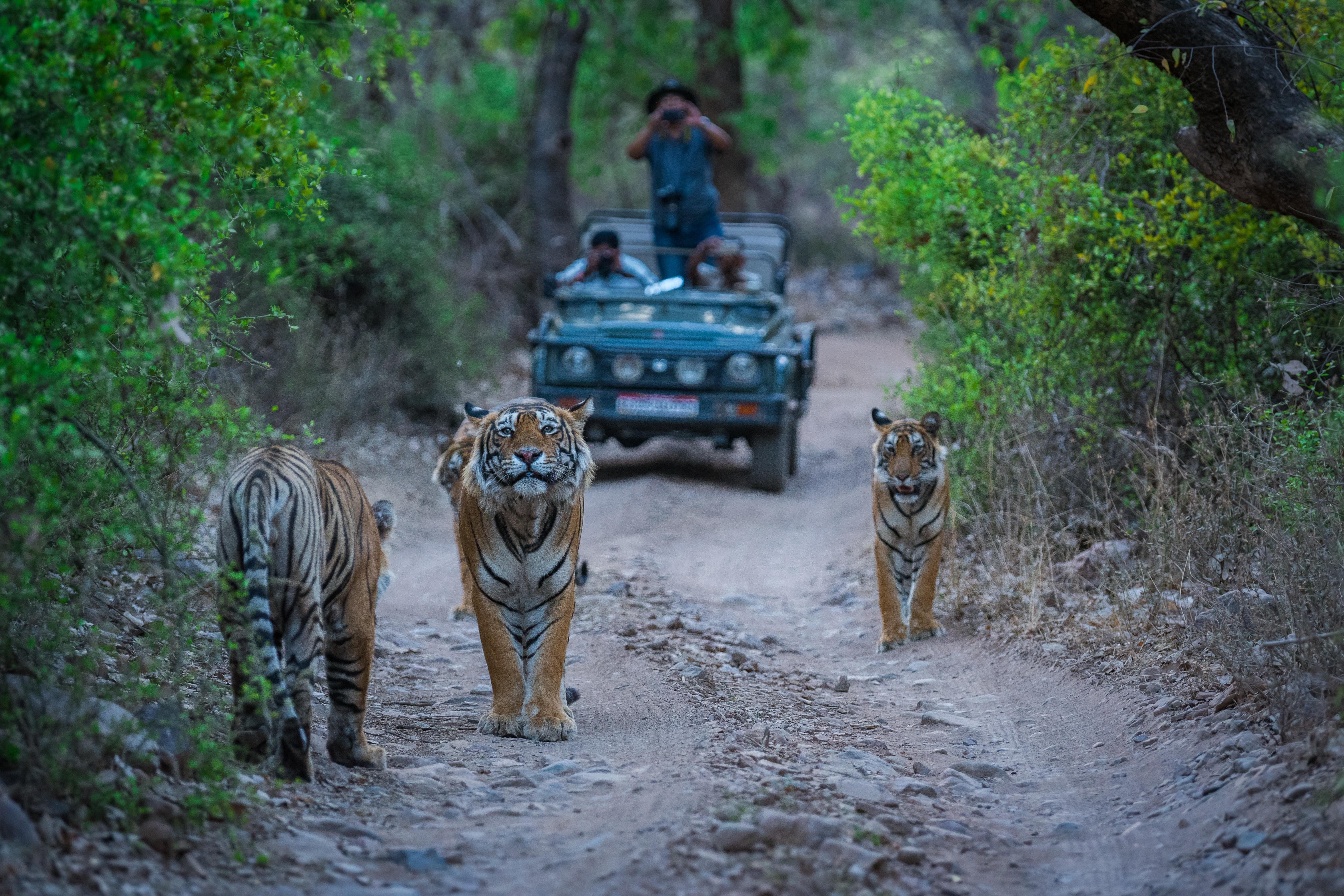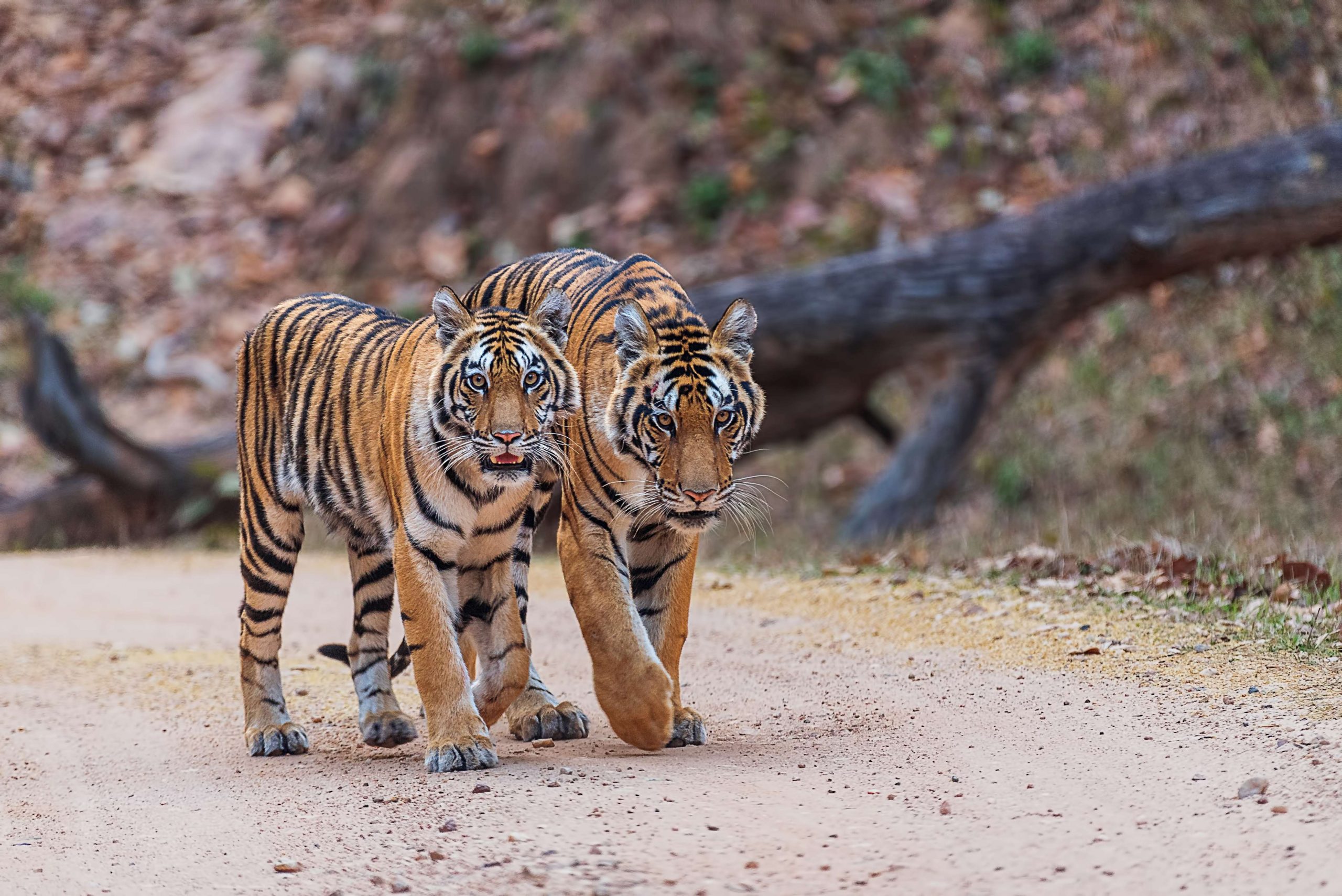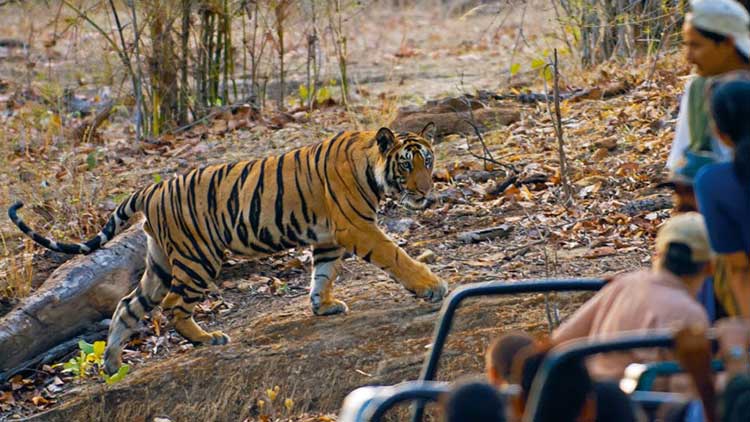When planning a Wildlife Tour in India, one of the most common questions travelers ask is:
“What’s the best time to see tigers in India?”
After spending more than 14 years exploring India’s top tiger reserves — from Ranthambore and Bandhavgarh to Kanha and Corbett — I’ve learned that tiger sightings depend on far more than just luck. It’s about timing, patience, and understanding the jungle’s rhythm.
If you’re planning a Tiger Safari in India or a Wildlife Photography Tour, this complete guide will help you decide where and when to go, how to choose the best zones*,* and what to expect during your jungle adventure.

Why India is the Best Place for Tiger Safaris
India is home to nearly 70% of the world’s remaining Royal Bengal Tigers. As per the 2018 census, around 3,000 tigers roam freely across India’s national parks and tiger reserves.
Thanks to Project Tiger and decades of conservation efforts, the population of these majestic cats has grown by over 30% in less than a decade. India’s forests are now the global hub for tiger safaris, offering unmatched opportunities for wildlife enthusiasts, nature lovers, and photographers alike.
A Tiger Safari in India is not just about spotting a tiger — it’s an immersive experience of nature, silence, and anticipation. Each sighting feels like a reward earned through patience and passion.
Best Time to See Tigers in India

The best time to see tigers in India varies depending on your travel goals — whether you’re a casual traveler, a wildlife lover, or a professional photographer.
For Tourists & Wildlife Lovers (October to June)
For most visitors, the ideal time for Tiger Safaris in India is between October and June.
- October to February (Post-Monsoon to Winter):
- The jungle is lush, green, and full of life after the monsoon. Though tiger sightings are slightly less frequent due to dense foliage, the scenery is absolutely magical. Perfect for first-timers and nature lovers.
- March to June (Summer):
- This is the best season for tiger sightings. As the temperature rises, water sources dry up, and tigers often visit watering holes to cool off. The visibility is higher, and success rates for tiger sightings can reach up to 80% during this period.
Avoid weekends and festivals if possible — local crowds can make safaris busy and noisy.
Morning vs Afternoon Safaris
Almost every national park in India offers two safari slots per day — morning and afternoon.
- Morning Safaris:
- Ideal for photographers and serious wildlife enthusiasts. Tigers are more active, and the golden light adds a magical touch to your photos.
- Afternoon Safaris:
- Warmer, but equally thrilling. Tigers often emerge from their shaded hideouts and head toward waterholes around sunset, offering incredible sighting opportunities.
If you can, plan for multiple safaris — both morning and evening — for a balanced experience.
Choosing the Right National Park
India has over 50 tiger reserves, but not all offer high sighting chances. Based on decades of experience, these are the best tiger reserves in India for reliable sightings and memorable experiences:
- Ranthambore National Park (Rajasthan):
- One of India’s most popular tiger reserves, famous for its royal ruins, lakes, and the legendary tigress Machhli.
- Bandhavgarh National Park (Madhya Pradesh):
- Known for having the highest tiger density in India. Ideal for photographers and wildlife enthusiasts.
- Kanha National Park (Madhya Pradesh):
- The forest that inspired Rudyard Kipling’s The Jungle Book. Perfect mix of lush sal forests, open meadows, and abundant wildlife.
- Pench National Park (Madhya Pradesh):
- Another Jungle Book inspiration — ideal for those who prefer less-crowded safaris and stunning landscapes.
- Jim Corbett National Park (Uttarakhand):
- India’s first national park and a paradise for nature lovers, with rivers, forests, and plenty of tigers.
Importance of the Safari Zone
Every tiger reserve in India is divided into zones, and not all zones have the same tiger activity.
When booking your Wildlife Tour in India, ensure your travel operator reserves premium or core zones where tiger sightings are more common. Some outer or buffer zones are less active and might reduce your chances of sightings.
Booking early — at least 3–4 months in advance — ensures you get the best safari zones.
The Role of Naturalists & Drivers
A good naturalist and driver can make or break your safari.
Tigers are elusive creatures. They leave subtle signs like pugmarks, alarm calls, and scent marks — clues that expert naturalists use to track them. A skilled tracker knows where the tigers rest, where they hunt, and where they cool off during the day.
At Indian Maharaja Tours, we work with experienced local trackers who dedicate 100% effort to maximizing your chances of a memorable sighting.
For Wildlife Photographers
If you’re a professional or semi-professional photographer, timing is everything.
- October to February: Best for atmospheric photography — misty mornings, dramatic light, and rich colors.
- March to May: Best for tiger behavior shots — tigers in water, cubs playing, and high visibility.
To capture stunning images, plan multiple safaris in the same zone to understand tiger movements and light conditions.
Also, modify your jeep setup if needed — remove middle seats for space, mount tripods, and ensure you have the same driver and vehicle throughout your shoot.
My Personal Experience
I started my first Tiger Safari in Ranthambore in 2006, and since then, it has become my second home. Over the years, I’ve participated in multiple wildlife censuses, followed famous tigers, and guided hundreds of travelers through India’s most iconic jungles.
Through all these experiences, I’ve learned one thing — tiger sightings are not just about luck; they are about respect, patience, and understanding nature’s pace.
At Indian Maharaja Tours, we’ve handpicked the best eco-lodges, employed expert trackers, and designed perfectly timed itineraries to ensure your Wildlife Tour in India is unforgettable.
Final Verdict: Best Time to See Tigers in India

- For Tourists & Nature Lovers: February to Early June (higher sighting chances)
- For Photographers: October to February (best lighting and atmosphere)
Each season offers its own magic — from golden summer plains to misty winter mornings. The key is to plan ahead, pick the right park, and travel with experts who know the jungle like home.
About Indian Maharaja Tours
At Indian Maharaja Tours, we specialize in Wildlife, Photography, and Cultural Tours across India and Asia. Through our subsidiaries — Photography Tours in India and The Wildlife Tour — we operate premium safari experiences in India, Sri Lanka, Nepal, Vietnam, and Cambodia.
Founded by travel duo Harsh and Arti, our tours blend storytelling, local expertise, and high-quality hospitality. While Harsh leads tours with his captivating travel tales and photography insights, Arti ensures seamless logistics and personalized service.
Whether you’re a first-timer or a seasoned explorer, we promise your Tiger Safari in India will be one for the ages.





Comments